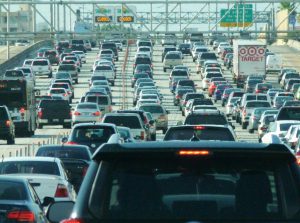
Not that one, which is already mostly paved over. Except for the lovely jardin envisioned by Madame de’Medici way back when.
Just as she played her role in helping construct a civilization, are we playing ours in paving over an extinction? That it would be the sixth creates a misnomer, as if in reference to a series and not to an end. We aren’t able to recognize ends all that well, though we are frightened of them and the concept has meaning that we connect to negative consequences. And still the paving continues – not building cities but destroying them to build roads. I know:
That doesn’t matter to Maryland governor Larry Hogan, who proudly touts himself as a good Republican (and is being talked up as a primary challenger to Trump next year), even though he can be as squirrelly as the rest of them. His plan to widen this road would cost between $9 billion and $11 billion and, according to one presentation, would improve commute times by an estimated three minutes. That’s $9 billion plus in funds and umpteen years of construction. For three minutes.
‘This road’ is D.C.’s notorious Beltway, but several major highways into poorly planned cities can be substituted for it. Expanding highways with so-called private toll lanes (hint: not private – only expensive and paid for by the public) that do not ease congestion but do cost several fortunes, as nonsensical as it is, represents one of the only forms of acceptable infrastructure expenditure.
Roads. Look at those dollar amounts again and tell me there’s anything more gaudy than that. And they work, though of course, not as intended.
Public, private or purple, more roads do not lessen traffic. More lanes and wider roads invite more traffic. And more traffic happily accepts!
But there is a thing that lessens traffic, and it even throws a [tiny] wrench into sprawling suburbs, that is, of course, until those plucky little suburbs fight back.
Try driving around North Atlanta between noon and midnight (or, if you like, between the hours of midnight and noon) and you’ll see why they were having none of this train stuff. It. Just. Doesn’t… Actually, I don’t know what it doesn’t do but the lovely residents of the area should hope that Tesla fella is full of it because his auto-autos, were they to ever exist, would be sitting right there with them, not moving, on those same roads.
So the bizarre-o metaphors roll on. The apply named Toll Roads. Pay both ways! 3 hours, round-trip. Personal freedom and individual liberty to sit, and stew, burn and rage. It cannot have a logical end, because there is no logic to it. But surely an end shall it have. Closed Road Now Open. Merge. Expected Arrival Time: Mm Hmm.

